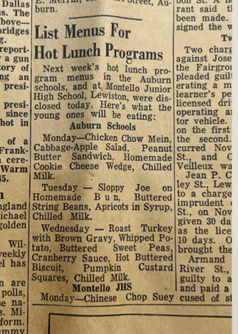One example is the creation of breaded turkey patties and nuggets from the Jennie-O® brand. “We knew that one of the most popular menu items for kids in school is breaded products,” Cool noted. “So we developed a breaded turkey nugget and a breaded turkey patty, mimicking the chicken product that kids are super familiar with. Our breaded turkey products are the first and only products of their kind in the K-12 school lunch program.”

By developing breaded turkey nuggets and patties, Hormel Foods provided schools with a nutritious, familiar and enjoyable new option. To further enhance the appeal, they’ve added a dill flavor to certain products, aligning them with pickle-forward flavor trends popular in fast food chains.
“I would say everyone in this space is deeply passionate about what we do,” Cool reflected. “It’s a shared mission because, at the end of the day, we’re feeding kids. Research shows that many of these children are the most vulnerable, and the healthiest meal they get during the day is at school. Our team has always been focused on making it easy for kids to eat well, and we’re incredibly passionate about that. We all have a vested interest in the outcome and what it means for these kids, and we’re committed to providing those solutions.”
Meeting USDA’s New Nutrition Guidelines
In April 2024, the U.S. Department of Agriculture introduced new guidelines looking to improve the nutritional quality of school meals. These guidelines call for significant changes requiring innovative approaches from both school foodservice operators and food providers. Changes include stricter sodium reduction targets — a longstanding priority for the sector — new restrictions on added sugars, and the introduction of protein as a flexible component in school breakfast programs.
“School meals are not just bureaucracy or a list to check; they can make a huge difference in learning outcomes,” said Alexina Cather, director of policy and special projects at Wellness in the Schools, a national nonprofit that teaches healthy habits to public school students. “For this reason, this new rule should be applauded. However, there are several places where the rule could have gone further to make school meals more nutritious. Not enough has been done to ensure that school food professionals have the budget, infrastructure and time to make these changes a reality.”
Cool asserted the need for innovation and collaboration. “These updates are pushing us to be more innovative, especially with the new sodium and sugar restrictions. It’s going to take collaboration across the industry to meet these standards and still provide meals that kids will enjoy.”
Farm to School
Among the trends in the K-12 foodservice landscape is a move toward local sourcing, in a quest to promote local economics, develop a resilient supply chain, and engage students. Cool notes that many school districts are incredibly dedicated to sourcing locally. “They often dedicate specific days like ‘Minnesota Thursdays’ or ‘New York Mondays’ to feature products from local farms. This not only supports local agriculture but also brings a sense of community into the cafeteria, making students more connected to the food they eat.”
An example of an innovative approach to support local agricultural producers is in central Texas, where school districts are now serving locally raised beef in their meals. Driven by school teachers and employees eager to provide better food options for the students, the Barnard Family Farm, which has been serving the community for 100 years, is now supplying local ground beef to three school districts. The collaboration was kicked off after the school applied for a grant through the Texas Department of Agriculture’s Local Food for Schools program, which has been implemented by over 300 schools in the state.
“Some schools are even integrating gardening into their curriculum, allowing students to participate in growing the food that ends up on their plates,” Cool noted. “It’s a hands-on approach to teaching nutrition and sustainability, making the school meal more meaningful.”
Littleton Public School in Massachusetts was recently awarded the Healthy Meals Incentives Recognition Award from the USDA for its work in crafting an inclusive lunch menu, and innovative efforts to ensure every student feels welcome at lunch time. The school district engages students by allowing them to sample items before they are added to the menus to ensure they’re not only nutritious, but also appealing. After the new item is approved and added to the monthly menu, elementary students receive “I tried it!” stickers as a reward for sampling the new dishes.
Cool is observing similar trends in schools across the nation. “We see a lot more schools doing great work in finding out what their students eat at home and bringing in dishes that represent those cultures. For instance, in Minnesota, some schools have incorporated Somali Sambusas to reflect the preferences of their Somali student population. It’s about more than just offering global flavors, it’s about representing the student body.”


